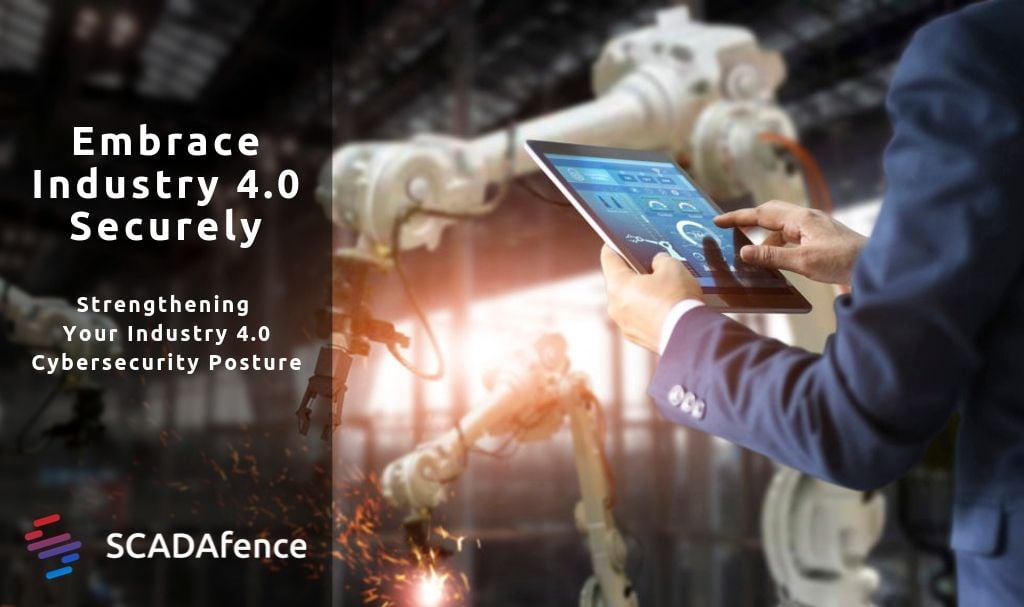Strengthening your Industry 4.0 Cybersecurity Posture
The fourth industrial revolution is all about connectivity. While many manufacturers and industrial network operators want to take advantage of the latest IIoT and Industry 4.0 advancements, they are held back by the risks of shifting from air-gapped to fully connected OT environments.
However, other organizations see security as an Industry 4.0 enabler, understanding how proper security capabilities accelerate growth and enable rapid adoption of advanced technologies, instead of only reducing risk.
The Consequences of a Poor Industrial Security Posture
Industrial environments are increasingly more connected, complex, and dynamic. Businesses are pushed to embrace the latest technologies such as cloud analytics and predictive maintenance and allow third-party remote access to remain competitive. It’s critical to shift decision-makers and security practitioners from the “How can I isolate?” state of mind to “How can I stay secure while connected?”
Of course, in the industrial space more than any other, safety, security and reliability need to be the main focus to make this revolution happen. Adopting the right security tools can open doors for industrial transformation, allowing manufacturers to run free and fast, knowing that security has an early and continuous role throughout this transition.
To choose the right security solution for their own unique needs, businesses need to understand what’s at stake if they get it wrong. For manufacturing and industrial networks, potential fallout can be categorized into three main causes for concern:
- Hackers who have access to the physical systems can cause operational downtime by stopping production, creating significant financial damage by hurting the company’s main revenue stream and their customers’/supply chain’s trust.
- If an adversary can access the production environment and manipulate the operational processes, he could cause health and safety issues leading to potential recalls of products and reputation damage, or simply ruin an entire batch of a production cycle.
- Hackers are constantly trying to get their hands on sensitive information, stealing intellectual property or proprietary information about a company’s processes or day-to-day activities. By accessing the industrial control systems, cyber attackers can steal production recipes to gain a competitive advantage.
You Don’t Need to be the Target to Become the Victim
In the past few years, the operational technology (OT) threat landscape has been shifting from targeted campaigns such as the cyberattack against the power grid in Ukraine to widespread attacks such as WannaCry and NotPetya. One recent example is the Norsk Hydro incident, where LockerGoga ransomware spread to the OT network, disrupting operations and causing damage estimated at tens of millions of dollars in losses.
Norsk Hydro is not the only victim of the growing threat landscape; TSMC, Mondelez, and Merck were also victims of attacks that we’re able to cause substantial damage that reached several hundreds of millions of dollars.
As a company, you might ask: “Why me?”
Analysis of the recent incidents shows that some of the most devastating cases with the most significant financial effect were collateral damage and not targeted attacks. The rise in internal and external connectivity has opened endless doors for adversaries who recognize that industrial networks are less protected than IT systems and see them as easy targets. Therefore, organizations shouldn’t assume that they’ll be breached only if they are a high-profile target such as critical infrastructure. These organizations need to realize that having the wrong connected device in the wrong place could initiate an incident.
Cybersecurity is a Growth Enabler, Not a Barrier
To position security as an enabler for digital transformation, companies should ensure they are prepared for this new connected era. This is achieved by first realizing your security challenges and weaknesses and eliminating them in advance when possible. Once an organization gains visibility into its environment, analyzes its unique risks, and implement the required security controls and procedures to remediate threats, it can focus on adoption of IIoT and substantial growth.
Discussions around security should not focus on its limitations but rather on it is the foundation that allows the adoption of these new capabilities. Instead of having cybersecurity as an add-on as an addition to an existing deployment, it needs to be addressed in the design phase, ensuring that it’s embedded into the environment as early as possible.
Since security is viewed as a core element of digital transformation, it should be addressed in collaboration between the IT and OT teams, in order to provide maximum security, safety, reliability, and efficiency.
The latest advances in OT cybersecurity are opening up opportunities for factories and manufacturers to adopt sophisticated services in complex environments. Cutting-edge technology and automation can provide advanced manufacturing flexibility and efficiency and a truly competitive edge.
For example, an organization that has implemented a dedicated remote access platform and combines it with the ability to detect abnormal activities in its internal network should feel safe. When it opens up its network to external connections for predictive maintenance or other cloud-based applications, it’s still secure. Taking a proactive approach benefits the security and the operational teams and the organization as a whole.
To embrace Industry 4.0, organizations need to have an accurate real-time understanding of the entire OT environment and put the proper controls in place. Having a strong cybersecurity posture delivers peace of mind when enjoying the many benefits of industrial IoT.


